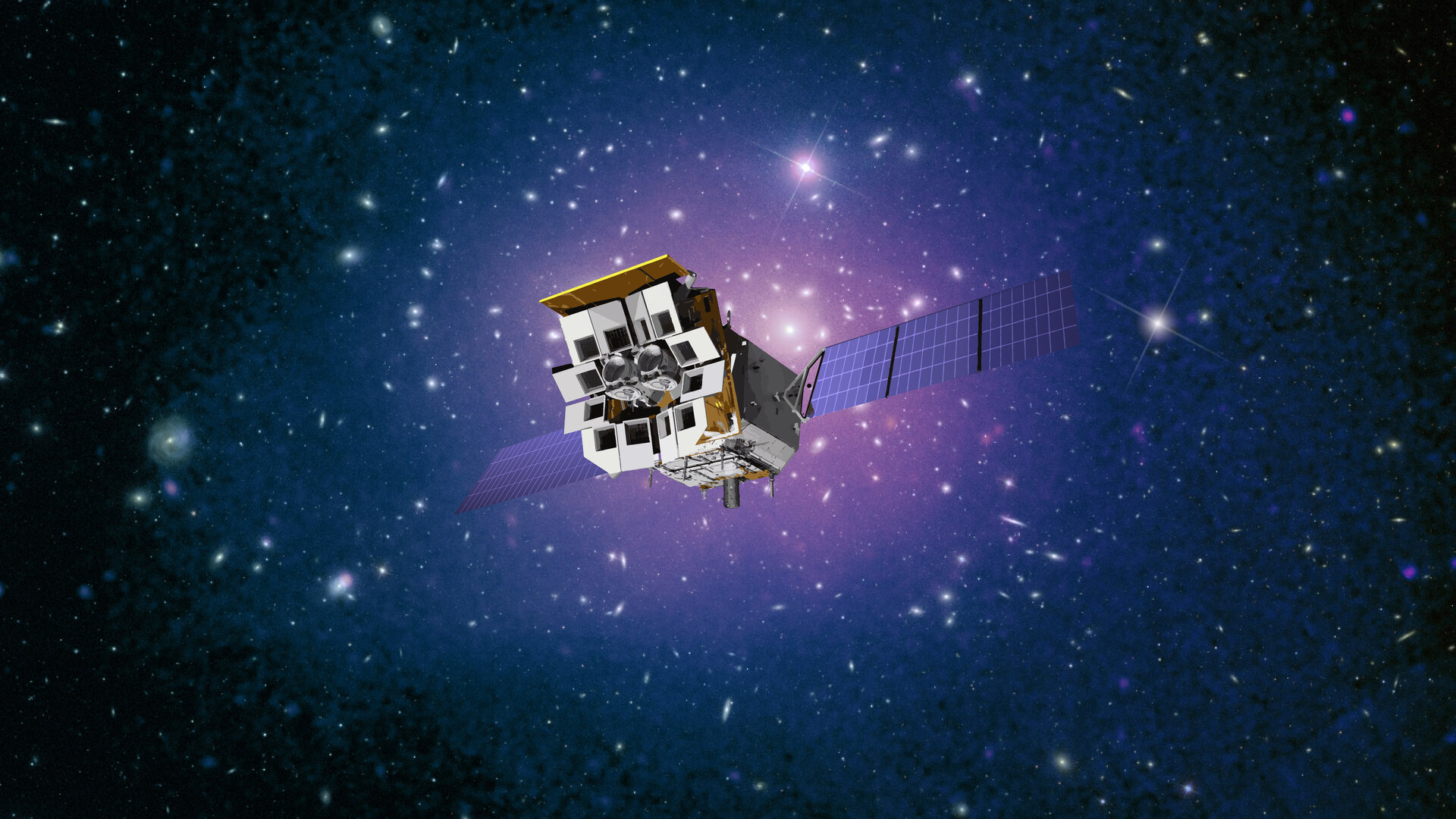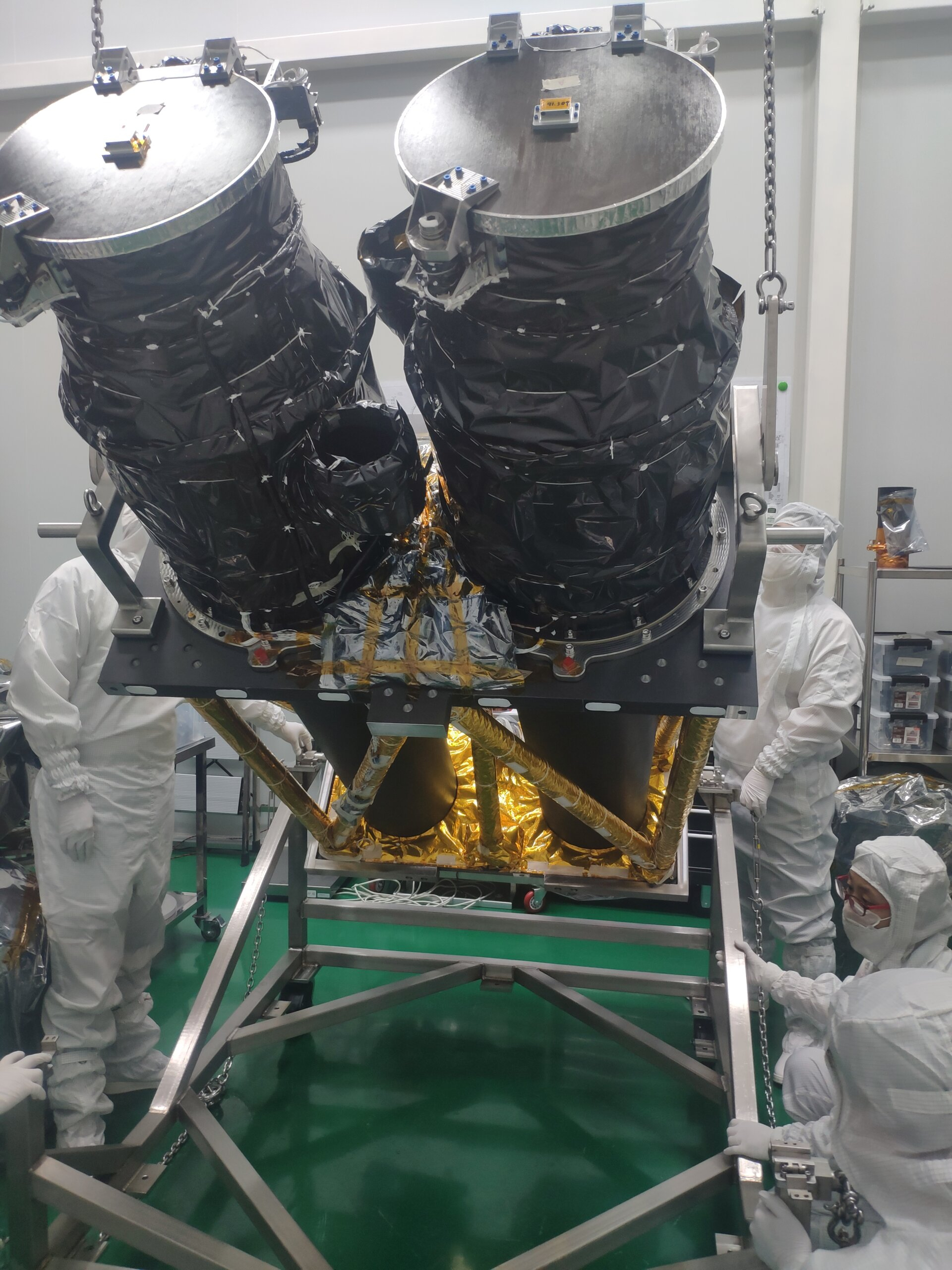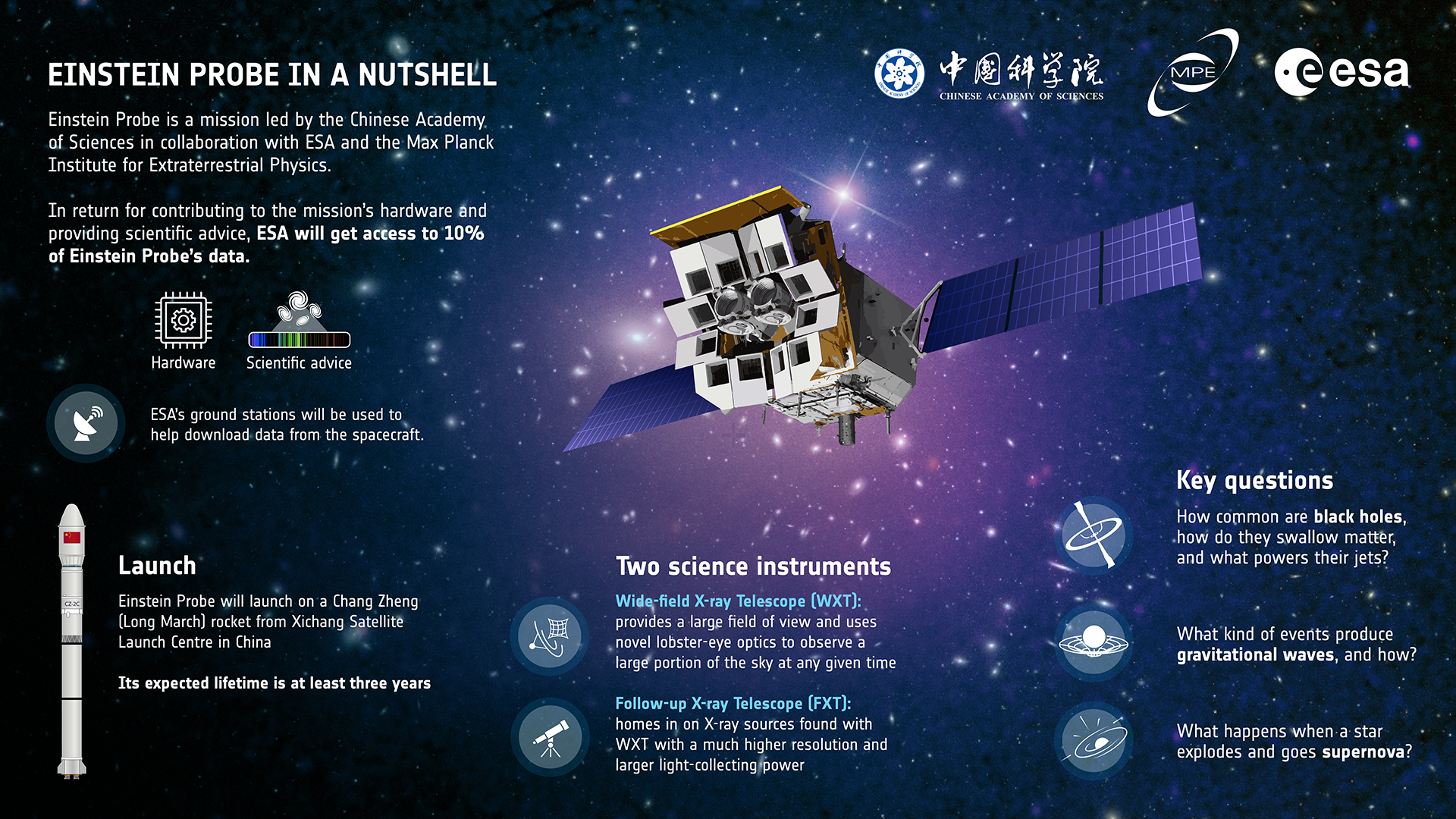Upcoming Einstein Probe will use its 'lobster eye' to hunt for extreme black holes and star explosions
"The cosmos is our only laboratory to investigate the most energetic processes."

A new space telescope set to launch in Jan. 2024 will look at the cosmos with a revolutionary "lobster eye," hunting for X-ray bursts that stem from some of the universe's most powerful phenomena, including feeding black holes, colliding neutron stars and exploding stars.
Named for none other than Albert Einstein, the Einstein Probe is a joint effort between the European Space Agency (ESA), the Max Planck Institute for Extraterrestrial Physics (MPE) and the Chinese Academy of Sciences (CAS).
This spacecraft will possess highly sensitive, next-generation X-ray instruments and exhibit an exceptionally wide field of view, allowing scientists to both pinpoint new events and study them in detail.
"The cosmos is our only laboratory to investigate the most energetic processes," Erik Kuulkers, ESA's Einstein Probe project scientist, said in a statement. "Missions like Einstein Probe are essential to advance our understanding of these processes and to learn more about fundamental aspects of high-energy physics."
Related: X-rays reveal how 450-year-old Tycho supernova became a giant cosmic particle accelerator
Spotting the most violent events in the cosmos
X-rays are emitted by powerful and violent events like supernovas, from which they're launched as the cores of dying stars collapse. They're directly connected to stellar material that is shredded before it gets consumed by black holes too, as well as to the collisions of ultra-dense, already-dead stars called neutron stars.
Because these violent cosmic events are often short-lived, however, the X-ray light they emit can be highly variable and unpredictable. This light can appear and disappear and brighten and dim incredibly rapidly, often appearing in the sky for only a brief moment before vanishing for long periods — if they reappear at all, that is.
Get the Space.com Newsletter
Breaking space news, the latest updates on rocket launches, skywatching events and more!

Spotting these X-rays is highly desirable for scientists because encoded within this high-energy light is information about the source that produced it. That means by observing X-rays, the Einstein Probe could help scientists decode such events while simultaneously enabling astronomers to pinpoint new X-ray sources.
Because neutron star collisions emits both X-rays and gravitational waves — first predicted by Einstein in his 1915 theory of gravity general relativity — the Einstein Probe could help gravitational wave detectors locate the source of these tiny ripples in space-time that have traveled across millions, or even billions, of light years.
This could ultimately help scientists observe these collisions before they fade, revealing more about the dynamics of these collision events and the unique physics that occur around them. For instance, heavy elements such as gold are known to be created in the aftermath of neutron star collisions.
Why a 'lobster eye'?
To achieve its pioneering view of the universe, the Einstein Probe is equipped with two revolutionary instruments — the Wide-field X-ray Telescope (WXT) and the highly sensitive Follow-up X-ray Telescope (FXT).
The WXT gets its expanded view of the cosmos from its unique modular design, which resembles the eye of a lobster. Lobster eyes, unlike other animal eyes, have evolved to perceive light via reflection rather than refraction, meaning these crustaceans have a remarkable 180-degree field of view.
The so-called "Micro Pore Optics technology" of WXT allows the Einstein Probe to see 3,600 square degrees, which encapsulates 10% of the entire celestial sphere over Earth, in just one image. This enables it to see nearly the entire night sky over Earth in just 3 orbits around the planet, each of which would take the Einstein Probe just around 96 minutes to complete.
Once an interesting or new X-ray emitting event is spotted by WXT, the Einstein Probe's FXT instrument will take over, targeting the X-ray source and studying it in much greater detail.

In addition to this, when WXT makes a notable X-ray detection, the Einstein probe will fire a signal to ground-based observatories, allowing them to train other telescopes on the source and study it in a range of other light frequencies ranging from low-energy long-wave radio waves to high-energy short-wave gamma-rays.
This multi-wavelength data could be absolutely vital in conducting detailed investigations of supernovas, neutron star collisions and feeding black holes.
"Thanks to its innovative design, Einstein Probe can monitor large swaths of the sky at a glance," Kuulkers added. "In this way, we can discover many new sources while at the same time studying the behavior of X-ray light coming from known celestial objects over long periods."
Join our Space Forums to keep talking space on the latest missions, night sky and more! And if you have a news tip, correction or comment, let us know at: community@space.com.

Robert Lea is a science journalist in the U.K. whose articles have been published in Physics World, New Scientist, Astronomy Magazine, All About Space, Newsweek and ZME Science. He also writes about science communication for Elsevier and the European Journal of Physics. Rob holds a bachelor of science degree in physics and astronomy from the U.K.’s Open University. Follow him on Twitter @sciencef1rst.









